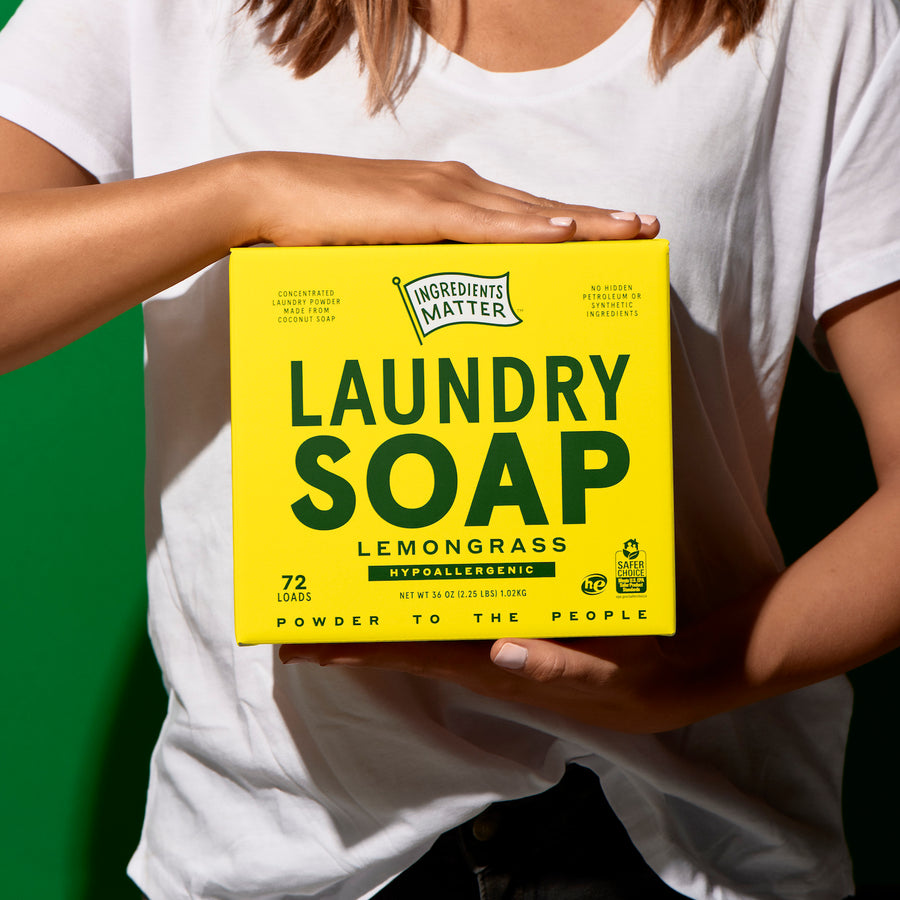Your cart is empty.
Let's change that. Start Shopping
Let's change that. Start Shopping
Nov 9, 2020

First up, the #1 ingredient of our Laundry Soap Powder: Coconut Soap Flakes, made with sodium cocoate, glycerin, and water. This natural soap made from coconut oil is gentle on skin and our waterways while offering major laundry cleaning power. But how do we make it?
It all starts with a lot of coconut oil in a large kettle, which we cook with steam until it reaches 220 F, during which we add an alkaline (sodium hydroxide) and plain water. Historically, soap was made with soda ash or sodium carbonate, but in modern times we use sodium hydroxide for solid soap and potassium hydroxide for liquid soap. This mixture plus time saponifies the oil—a seemingly magic process of simple chemistry in which a sodium counterion attaches to the hydrophilic (water-loving) head of the fatty acid molecules of the coconut oil—creating solid soap and glycerine. Typically soapmakers remove that glycerine from the mix (known as the full boil process), but we preserve the combination of solid soap and glycerine (the semi boil process) because we find that it makes our laundry powder dissolve better in water, which means a cleaner washing machine!
First we dry the hot soap on a chill roll—a 6-foot diameter drum filled with very cold water, onto which we pour the soup to quickly remove moisture, leaving behind solid soap which gets scraped off by a blade. That scraped soap rides a conveyer to a sifter mill, which is essentially a giant spinning screen that cuts the solid soap into fine flakes. And that’s it!
These soap flakes were truly an original household cleaner, used for laundry and so much more. There are plenty of DIYers out there that still make their own laundry soap flakes by grating bars of bath soap on a cheese grater! We make that process a little easier on you, but it’s essentially a DIY process on a larger scale.
At Ingredients Matter, we’re totally committed to using only ingredients made simply or found in nature as-is—without the complex industrial processes that other company’s products require. Curious about your current cleaning regimen? Peek at the labels of your laundry detergent, dish soap, hand soap, and all-purpose spray. If you see sulfate, glucoside, ethoxylate, or betaine, that means its powered by synthetic detergents made with petrochemicals. These synthetic detergents are commonly found in "natural" brands like Seventh Generation, Mrs. Meyers, Better Life, Puracy, and almost everyone else. Start reading those labels, we're here to help you understand them.
What’s in YOUR "natural" cleaner?